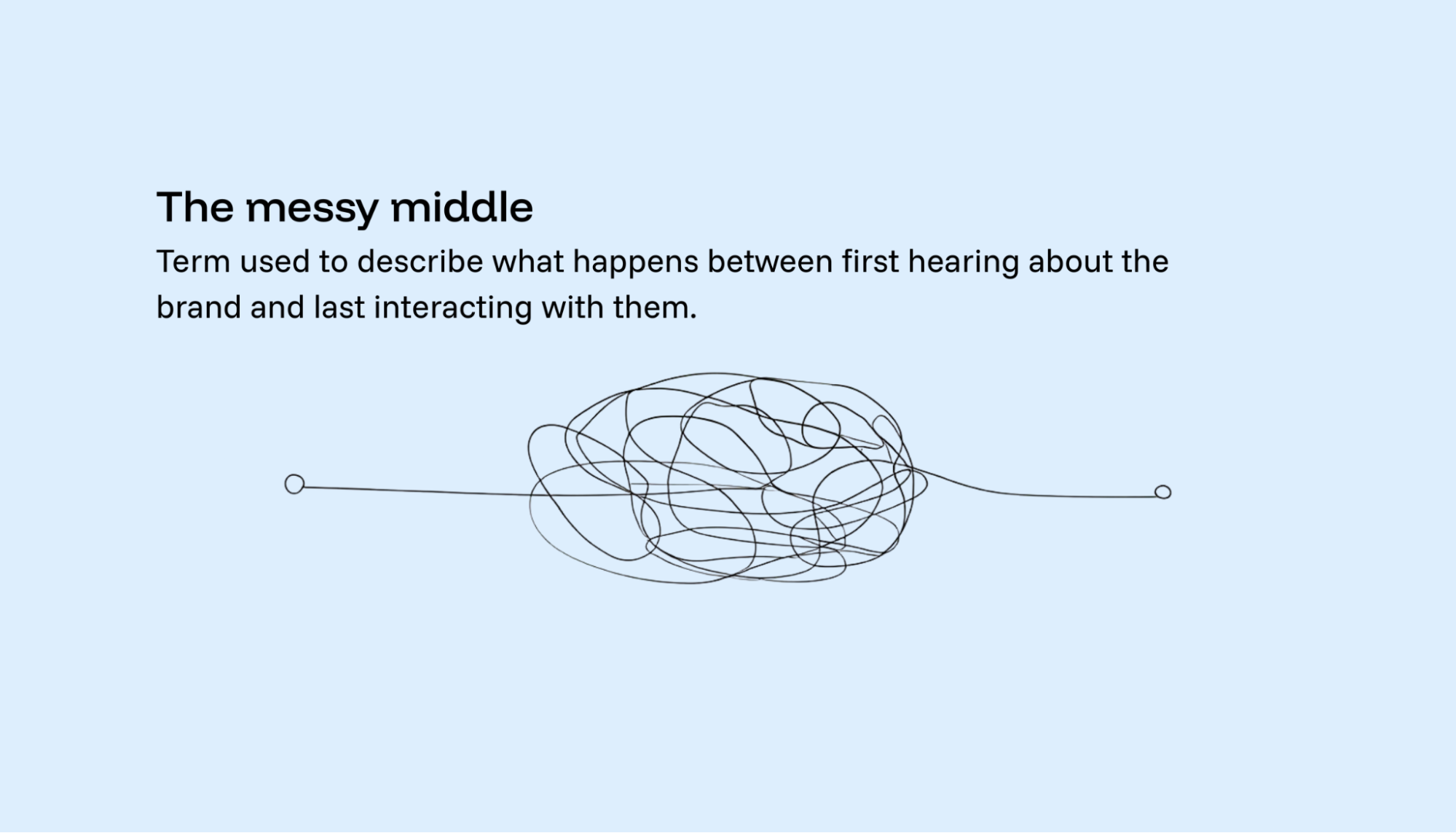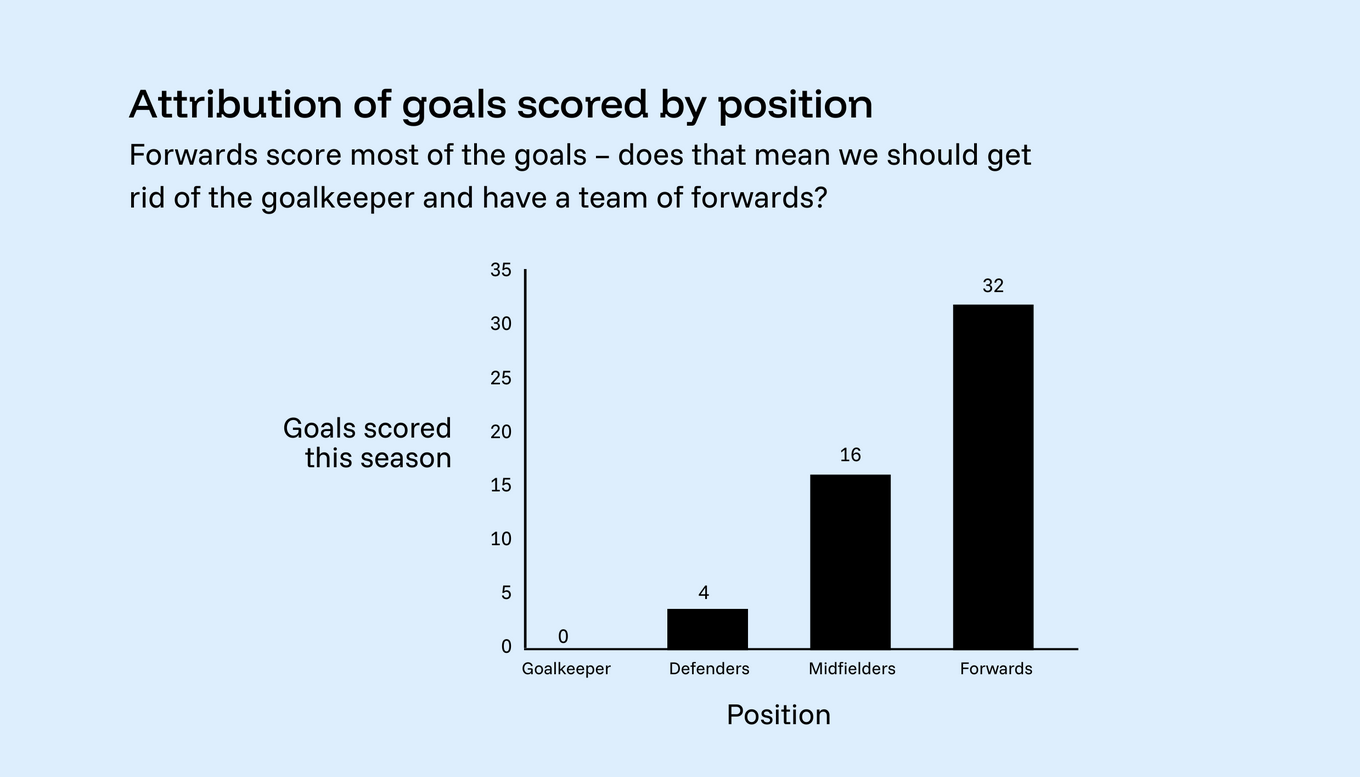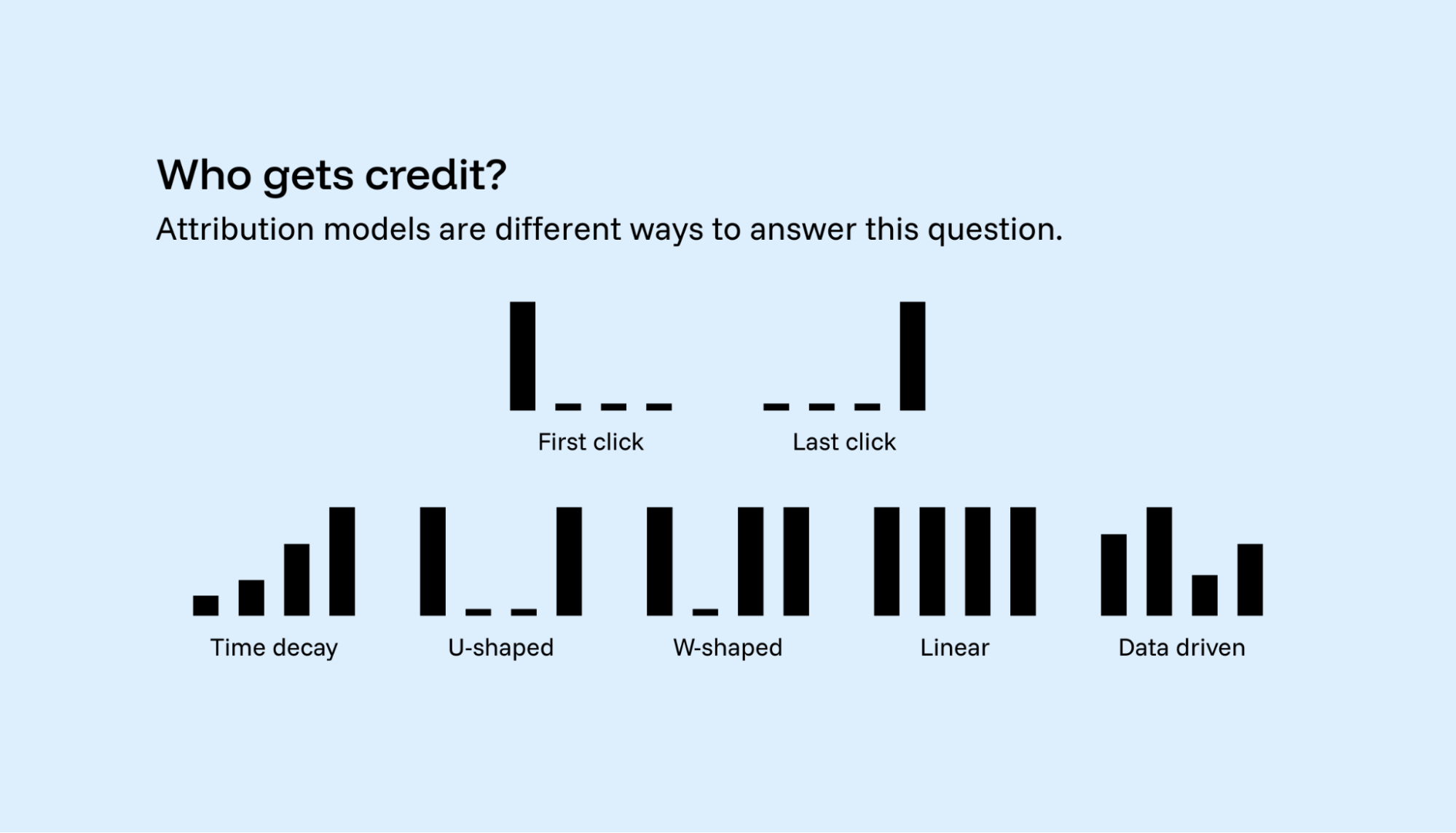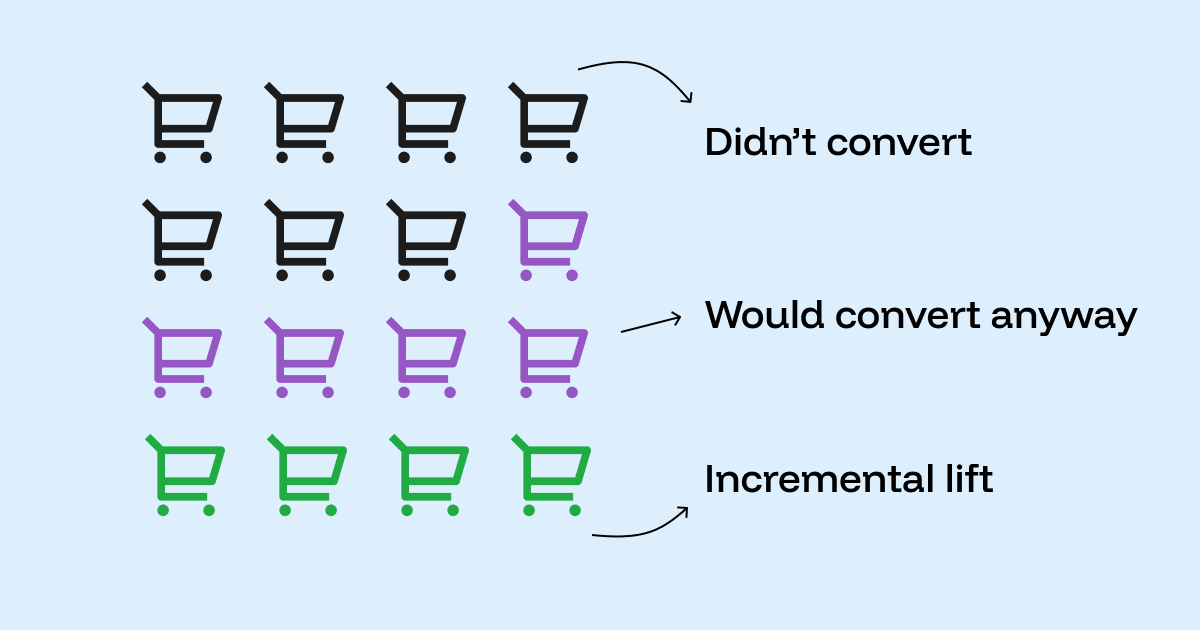-
Written by Christopher Van Mossevelde
Head of Content at Funnel, Chris has 20+ years of experience in marketing and communications.
Privacy rules, cookie loss and device switching have blown holes in the tidy funnels marketing teams used to track. Marketing attribution has become less about clarity and more about guesswork.
AdExchanger’s Madan Bharadwaj warns there’s no “easy button” for attribution. Marketers need to triangulate with multiple methods rather than hoping one model will give the truth. MarTech adds that attribution tells you what happened, but not whether it actually mattered.
Funnel’s Marketing Intelligence Platform is built to resolve these issues. It unifies data across every channel and applies advanced measurement models so performance teams can see which marketing efforts actually drive growth. You get context, clarity and insights on the effectiveness of your marketing channels. But before you can get beyond the messy middle, you need to understand what digital marketing attribution is and why it’s so difficult to measure.
What is digital attribution, and what does the messy middle mean?
Digital marketing attribution is the practice of measuring how different channels and campaigns contribute to conversions. It involves assigning credit to each touchpoint so you can see which efforts drive impact and which waste budget.
Why is marketing attribution important?
Well, the more marketing you run, the more interactions a customer will have with your business. The sum of all of these interactions, also known as customer touchpoints, is the customer (or buyer) journey.
For example, let's say a customer first finds out about your business in a Facebook ad. After weeks of exposure to different ads, organic content and offline interactions, they convert.

This may seem simple enough, but the reality is that the customer journey is rarely so linear. So much can happen in a customer journey, both online and offline, and we can't easily understand what goes on from when a customer first discovers our brand to the time that they convert. This is the messy middle.

Marketing attribution is the logic we try to apply to make sense of the messy middle. Unravel the messy middle, and you know which touchpoints matter and why. Using attribution data, you can get a clearer idea of how many conversions each channel drives and where to allocate media spend. Then, you can go back and improve your marketing strategy for better channel performance and ROI.
So how can you untangle this messy middle? With a marketing intelligence platform that brings together clean, normalized data, advanced measurement and no-code reporting.
Funnel pulls fragmented signals into one marketing intelligence platform. Instead of treating each touchpoint in isolation, Funnel connects them so you can spot patterns across platforms and see how channels reinforce one another. This creates a more reliable foundation for testing, modeling and investment decisions.
Why traditional attribution models fall short
Attribution in digital marketing has been sold as the silver bullet. A way to track every click and every impression and prove exactly what drove a sale. It sounds perfect, but this expectation is asking attribution to do more than it ever could.
Attribution alone doesn’t give marketers the complete picture they need to guide investment.
The missing piece is context.
Customer journeys now span devices, marketing channels and even offline touchpoints that most attribution models can’t see. Last-click attribution models still dominate, rewarding what’s easiest to track rather than what actually drives demand. As Funnel’s own analysis shows, no single attribution tool can solve that fragmentation or signal loss on its own.
That’s why the industry is shifting toward cross-channel, transparent and unbiased measurement. It’s where marketing measurement is headed and where Funnel is actively investing: toward a future where marketers can see true contribution, not just credit.
What are the challenges of relying on marketing attribution models alone?
Marketing attribution faces increasing complexity as customer journeys stretch across more channels, devices and touchpoints. Reliable tracking has become harder to achieve for several reasons. Four key challenges stand out:
1. Untracked touchpoints
Tracking clicks in digital channels is often easy, but it is reductive to disregard offline channels (even if your business is 100% online). By this, I mean conversations amongst consumers, offline sales efforts, billboards, etc. There are so many different marketing channels we can use, and this makes it significantly harder to track each and every one of them.
This leaves major gaps that no attribution model can fully cover, at least not alone.
2. Privacy and signal loss
With cookies disappearing and browsers tightening controls, attribution has lost precision. AdExchanger reported that 2024 was the breakout year for incrementality testing because last-click and even multi-touch digital attribution models lost their edge.
By 2025, the lesson became clear: marketers who rely on a single method don’t have the full picture. Measurement-focused teams learned to triangulate by combining attribution, incrementality testing and MMM to balance short-term clarity with long-term truth. Measurement shifted from chasing accuracy to building resilience.
Privacy-driven signal loss also pushed a move toward event-based tracking and stronger first-party data foundations. Instead of optimizing only what could be tracked, smart marketers built models that could withstand gaps and still guide confident spend decisions.
3. Codependent touchpoints
The purpose of multi-channel marketing is to run ads that work together to create an environment conducive to encouraging customers to convert. A YouTube ad alone might achieve nothing, because users are not ready to convert at that moment. But if they have grown familiar with your brand after seeing a display ad, they might be more likely to convert when they see you on social media.
Attribution models rarely show these interactions, so budget often gets misallocated.
Here’s another way to look at it: imagine a coach deciding to cut players who don’t score goals. What would happen as a result?

4. Model bias
Attribution models are built on assumptions that naturally shape results. A time-decay model favors lower-funnel activity, while position-based attribution models emphasize first and last touches. Even data-driven models depend on the signals available, often favoring measurable clicks over broader influence. The risk is that marketing decisions become optimized for the model instead of for business impact.
Takeaway: Attribution in digital marketing is not the full story, but it remains a critical piece of it. The next generation of measurement will connect attribution with incrementality testing and MMM to provide a transparent, unbiased view of performance. Funnel is building toward that future by giving marketers a unified foundation where every method works together to reveal true contribution.
Which attribution models should I use?
Marketers often ask which attribution model is best. The honest answer is that every model has trade-offs. For example, all types of digital marketing attribution are click-based, which means they overlook view interactions that can still influence conversions. The key is knowing when to use each one and what it misses.
Last touch attribution
This type of attribution model gives all credit to the final interaction before conversion. It’s best for optimizing short-term campaigns, but it ignores earlier engagement and overvalues lower funnel clicks.
First touch attribution
Credits the first interaction in the journey. Ideal for understanding awareness drivers, though it misses how later touchpoints influence purchase.
Linear attribution
Splits credit evenly across every interaction. Offers a fair overview of the full path, but assumes all touchpoints matter equally.
Time decay attribution
Gives more weight to recent interactions and less to early ones. This type of attribution model works well for products with short decision cycles, but discounts upper-funnel activity.
Position-based (U or W-shaped) attribution
Allocates most credit to the first and last touches with smaller shares in between. Reflects how discovery and conversion both matter, though it still oversimplifies real behavior.
Data-driven attribution
Uses machine learning to assign credit based on observed conversion paths. This type of attribution model is best for large datasets with enough volume to train models, but it’s limited by signal loss and platform bias.

Digital marketing attribution modeling is useful for optimizing campaigns inside ad platforms, but it’s not a full measurement solution. Let’s compare at a glance:
|
Model |
Best used for |
Limitation |
|
Last click |
Simple short-term optimization |
Ignores earlier touchpoints |
|
First click |
Awareness measurement |
Misses nurturing and conversion effects |
|
Linear |
Balanced view across channels |
Assumes equal impact |
|
Time decay |
Fast decision cycles |
Undervalues awareness |
|
Position-based |
Reflecting entry and conversion points |
Oversimplifies weighting |
|
Data-driven |
High-volume advertisers with strong signal data |
Biased toward measurable clicks |
Invoca reports that more than half of marketers now use multi-touch attribution models, but most see it as only one piece of the puzzle. Funnel takes the same view. Our measurement framework combines attribution with MMM and incrementality testing to reveal true contribution rather than simple credit.
The result is a more reliable view of contribution that helps performance teams move from credit assignment to real impact.
What attribution tools should your marketing team use?
Most ad platforms provide one or more types of attribution. Google Analytics and Google Ads are common starting points because they let you compare attribution models like last click, first click and data-driven.
These built-in tools are useful for optimizing marketing campaigns, but they also come with bias. Google’s own models will naturally over-credit Google inventory. The same is true across other platforms, which makes cross-channel comparisons difficult.
Dedicated attribution tools promise to solve this. Options range from standalone software to advanced analytics vendors. According to ScanmarQED, many of these face the same challenge: privacy changes and fragmented data make it hard to connect every touchpoint with confidence.
For performance marketers, the stronger path is to evaluate tools that fit into a broader measurement strategy. Our guide to the Top multi-touch attribution tools for 2025 compares leading options.
Funnel’s Measurement product isn’t another attribution add-on. It tears down the walls between data silos and combines attribution with MMM and incrementality testing to better understand marketing performance and help you optimize media spend. We’re also releasing dedicated data-driven attribution modeling capabilities for when your analysis is focused on performance campaigns.
Instead of guessing which model might be “less wrong,” you get a centralized overview that shows how every channel contributes to growth and where your next dollar should go.
Attribution in digital marketing shows who got the credit, but you also need to understand what actually changes outcomes. That shift starts with contribution analysis, then scales with incrementality testing and marketing mix modeling.
Most ad platforms provide some level of marketing attribution model analysis. Analytics platforms are a good place to start, for example Google Analytics. You can also use Google Ads to compare different attribution models, which will provide some insight on what might be the right model for you to optimize.
And when it comes to reporting, there are multiple tools on the market claiming to solve attribution. But above, I mentioned multiple challenges with marketing attribution models, all of which are fundamental issues that cannot be solved even if the tool is omniscient (which in itself is extremely hard to achieve amongst increasingly privacy driven consumers).
Take the average consumer, they will likely browse from a phone and a computer, often misleading us to believe they are different users. On top of this, if they have multiple emails, it’s hard to also connect these marketing touchpoints. Now add privacy into the mix: they might use an ad blocker or reject cookies, which means we lose out on even more signals. We cannot guarantee that we connect all the dots and create a clear enough picture of the customer journey.
A step-by-step playbook to modern marketing attribution
Modern attribution isn’t about picking the perfect model; it’s about learning faster. This playbook shows how to move from reactive reporting to proactive insight by testing contribution and exploring causal hypotheses before validating them with incrementality testing and connecting it all to real business outcomes.
1. Check contribution quickly
Attribution in digital marketing often feels like chasing shadows. Contribution analysis is the first move toward clarity. Instead of asking “who scored,” you look at how marketing channels worked together to create demand.
Start simple. Use Funnel to line up weekly spend and conversions by channel. Patterns emerge fast. If you see paid social spend rising in the same weeks that branded search conversions rise, you’ve spotted a potential link. Check for lag effects, too. A display push this week might not convert directly, but it could lift organic or paid search next week.
The goal in this stage is to cut obvious waste so you can focus on the marketing efforts that create value. If a tactic shows six weeks of rising spend with no lift in conversions, reallocate. According to MarTech, attribution alone “tells you what happened, not whether it mattered.” Contribution analysis reframes the question to focus on impact, exploring which efforts likely influenced results. Funnel makes that shift practical by giving you harmonized cross-channel data to run these checks without wasting time in spreadsheets.
2. Prove lift with incrementality
Contribution analysis gives clues. Incrementality testing provides proof. It answers the question that attribution models can’t: would those conversions have happened without the media investment?
Design holdouts to test this. Choose a region, store set or audience slice where you hold spend flat. In another, increase budget by 10 to 30%. Track both for two to four weeks. Inside Funnel, tag the test flights so you can isolate incremental conversions, incremental CPA and revenue per incremental conversion.

This discipline matters because attribution often over credits bottom funnel tactics like retargeting. Incrementality testing helps you prove causation.
If a channel shows positive lift at a strong incremental CPA, scale it. If the lift is marginal or negative, shift spend elsewhere. Funnel accelerates this process by stitching aggregate first-party (not PII) data, platform data and offline data into one hub so you can design tests quickly and measure results consistently.
3. Scale decisions with MMM
Once you’ve checked contribution and proven lift, you need a model to guide big budget decisions across the mix. That’s where marketing mix modeling comes in to help better understand your marketing ROI.
MMM uses multiple regression to connect media spend, conversions and external factors over time. It doesn’t rely on user-level tracking, which makes it resilient to privacy changes.
From Funnel, you can export weekly spend, impressions and clicks by channel, plus flags for seasonality, promotions and pricing.
Run model fits, validate with holdouts and refine with business constraints. For example, if you know TV’s contribution cannot exceed a certain range, encode that into the model.
But the true power of MMM is scenario planning. Use Funnel’s harmonized data and updated coefficients to run “what if” questions: what happens if you cut 20% of paid social and double retail media?
With Funnel refreshing data daily, MMM doesn’t sit in a slide deck. It becomes a live tool for weekly decision-making where outcomes actually impact your business reality.
Bringing it all together: triangulation with Funnel measurement
No single model wins on its own. Attribution shows contribution, incrementality proves lift and MMM maps the full landscape. The real impact comes when you connect digital marketing attribution with other types of measurement.
That’s what Funnel’s Advanced Measurement is built for. It brings attribution, incrementality and MMM together inside one marketing intelligence platform so teams can see performance through multiple lenses, validate what’s working and adjust budgets with confidence.
For enterprise teams, it means full triangulation of measurement. For mid-market teams, it means the same data-driven foundation powering a lighter cross-channel attribution product, soon available inside Funnel’s new Performance experience.
The result is measurement that’s unbiased, connected and built for action, from daily attribution checks to strategic forecasting. Funnel is the only marketing intelligence platform where every method works together to turn insight into growth.
-
Written by Christopher Van Mossevelde
Head of Content at Funnel, Chris has 20+ years of experience in marketing and communications.
